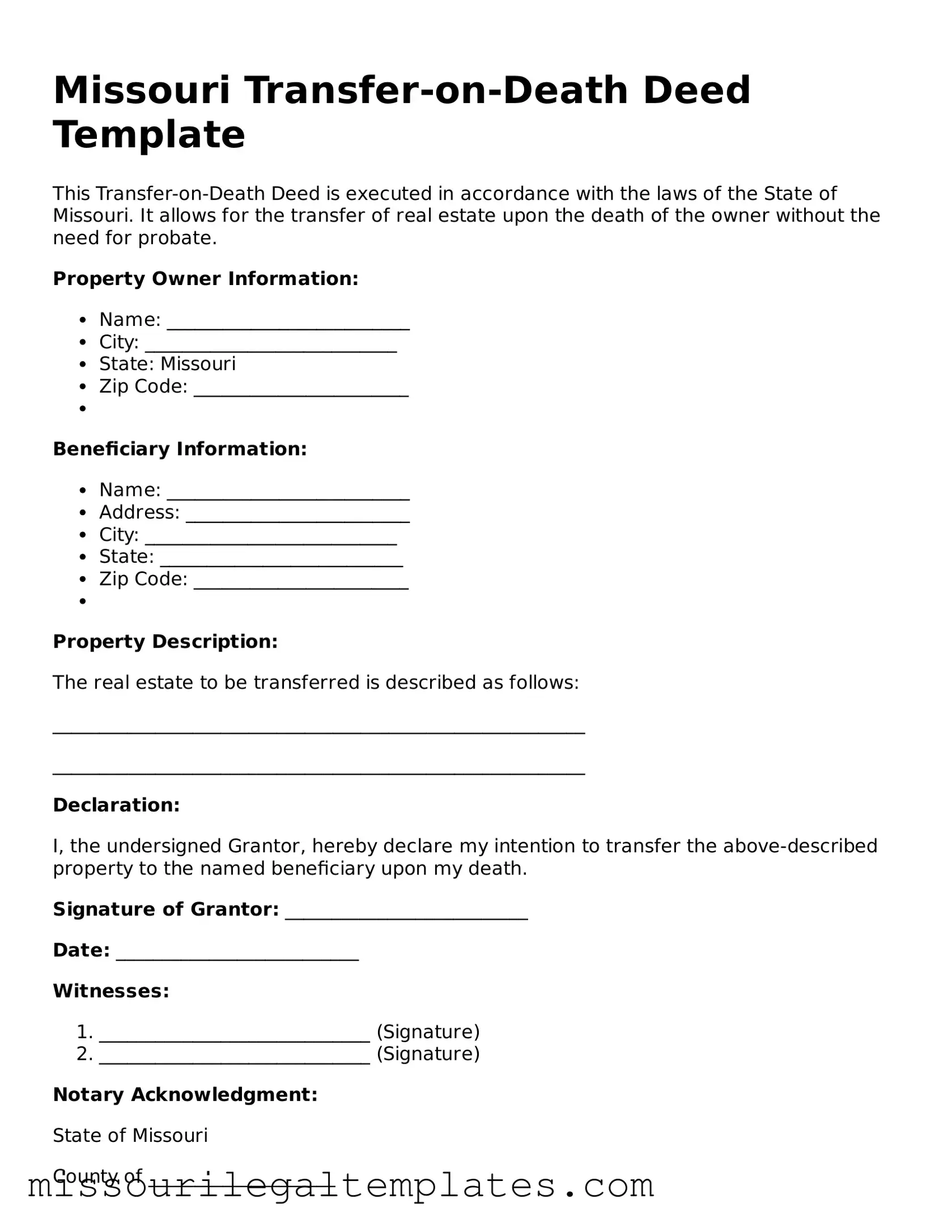Missouri Transfer-on-Death Deed Template
This Transfer-on-Death Deed is executed in accordance with the laws of the State of Missouri. It allows for the transfer of real estate upon the death of the owner without the need for probate.
Property Owner Information:
- Name: __________________________
- City: ___________________________
- State: Missouri
- Zip Code: _______________________
-
Beneficiary Information:
- Name: __________________________
- Address: ________________________
- City: ___________________________
- State: __________________________
- Zip Code: _______________________
-
Property Description:
The real estate to be transferred is described as follows:
_________________________________________________________
_________________________________________________________
Declaration:
I, the undersigned Grantor, hereby declare my intention to transfer the above-described property to the named beneficiary upon my death.
Signature of Grantor: __________________________
Date: __________________________
Witnesses:
- _____________________________ (Signature)
- _____________________________ (Signature)
Notary Acknowledgment:
State of Missouri
County of ____________________
On this _____ day of ____________, 20____, before me, a notary public, personally appeared ____________________________, known to me (or proved to me on the oath of ________________) to be the person whose name is subscribed to the within instrument and acknowledged that he/she executed the same for the purposes therein contained.
In witness whereof, I hereunto set my hand and official seal.
____________________________ (Notary Public)
My commission expires: ______________________
